
R. Held, D.E. Crawford, A.M. Johnston, A.M. Dabiran, and P.I. Cohen, University of Minnesota, Minneapolis, MN 55414
PCSI-24, Research Triangle Park, NC, January 12-15, 1997, Tu0920, 01/14/97, 9:20 A.M.
Abstract
GaN was grown by molecular beam epitaxy (MBE) on sapphire using a Ga Knudsen cell and an ammonia leak. Axial channeling experiments obtained using Rutherford backscattering with the ion beam incident along the <1101> axis indicate that the films are Ga terminated. For the MBE growth there are two distinct regimes: growth under excess ammonia in which the rate is limited by the Ga arrival flux and growth under excess Ga in which the rate is limited by the ammonia flux. Microscopic growth processes were examined with reflection high energy electron diffraction (RHEED), desorption mass spectroscopy (DMS) and atomic force microscopy (AFM).
Under excess ammonia, oscillations in the specular RHEED intensity are observed on smooth surfaces with a (1x1) reconstruction but not for the (2x2). Contrary to previous suggestions, the period os these oscillations does not correspond exactly to integral layer deposition, indicating that a fraction of the incident flux does not contribute to island nucleation. These oscillations, however, are not characteristic of a narrow growth front - when the Ga flux is interrupted, the intensity does not recover without a smoothing step and the growth becomes 3D in this region. The resulting surface exhibits 100 nm size features though no dominant facet is observed. These RHEED oscillations are observed from between 500 to 800 degree C. Above 700 degree C the period decreases with an activation energy of 1.2 eV.
Under conditions of excess Ga, surfaces are much smoother but RHEED intensity oscillations are not observed. In this region, when growth is started, RHEED measurements of the surface show changes due mainly to the increased Ga coverage. The growth kinetics are examined by measuring the Ga and H_2 desorption signals. Desorption studies indicated that both hydrogen and nitrogen are present in a nitrided surface in the absence of Ga. In this excess Ga regime, growth at low temperature is limited by GaN condensation and growth at high temperature is limited by GaN sublimation. The activation of the latter was measured to be 3.4 eV, and the sublimation rate decreased in the presence of Ga.
* Partially supported by the Office of Naval Research and the Air Force Office of Scientific Research
+ NOTE ADDED BY AUTHORS AFTER PRESENTATION:
The polarity of the films discussed here was originally believed to
be GaN(0001), also referred to as GaN(0001)A or Ga-polar. We later established
that these films were of the GaN(0001(bar)) polarity instead. Depending
on nucleation procedure these films might exhibit some inversion domains,
giving rise to a weak (2x2) reconstruction instead of just the (1x1) pattern
observed on unipolar GaN(0001(bar)).






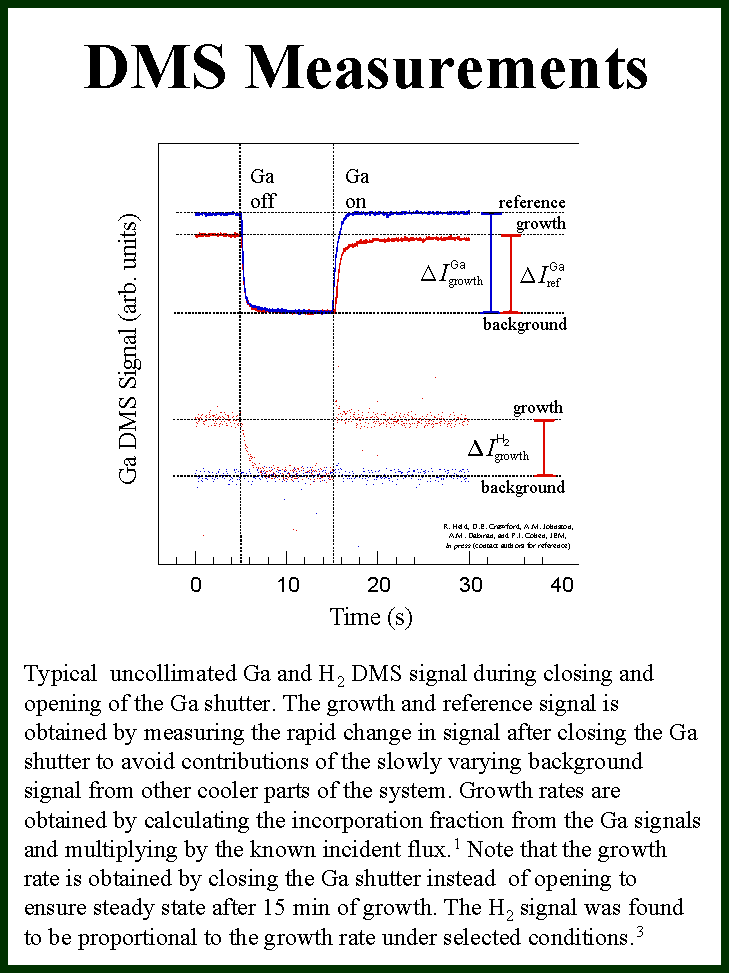


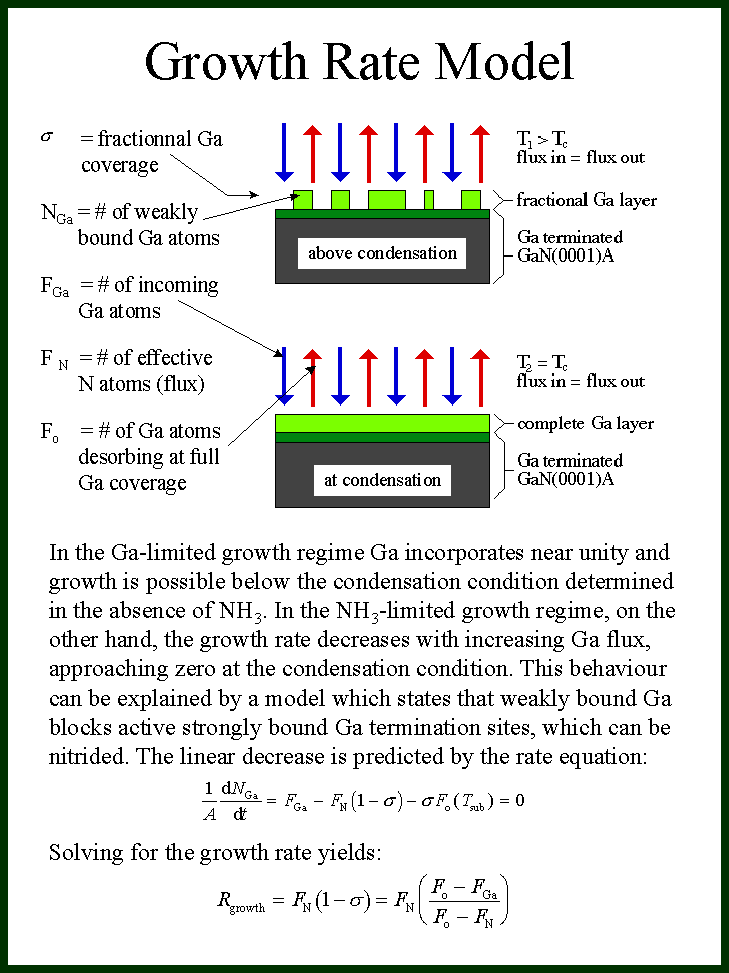
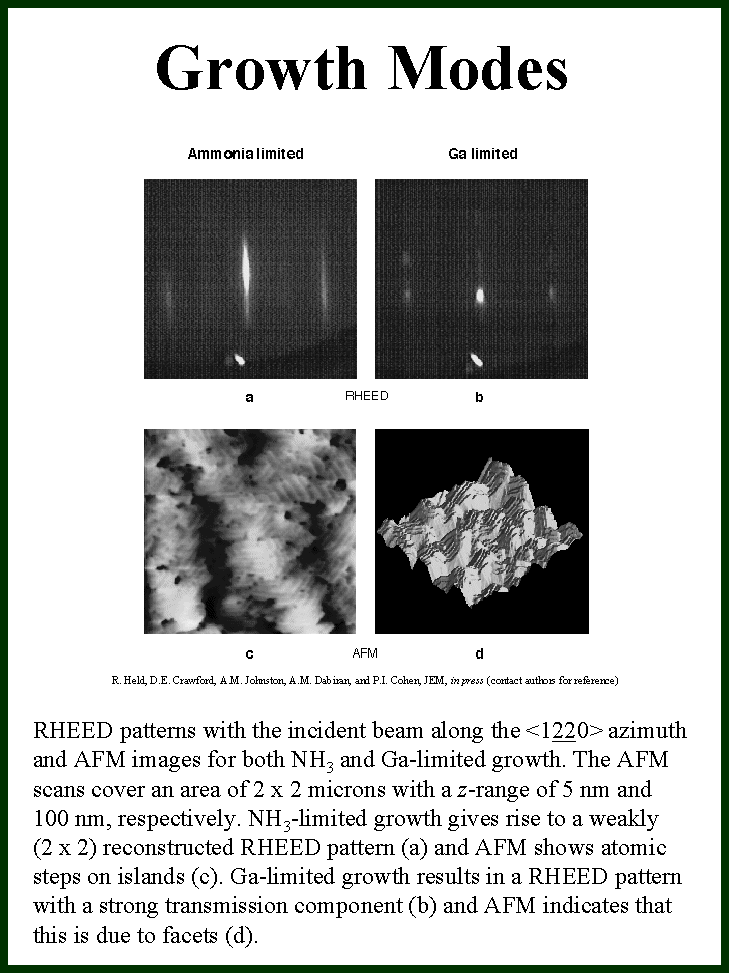
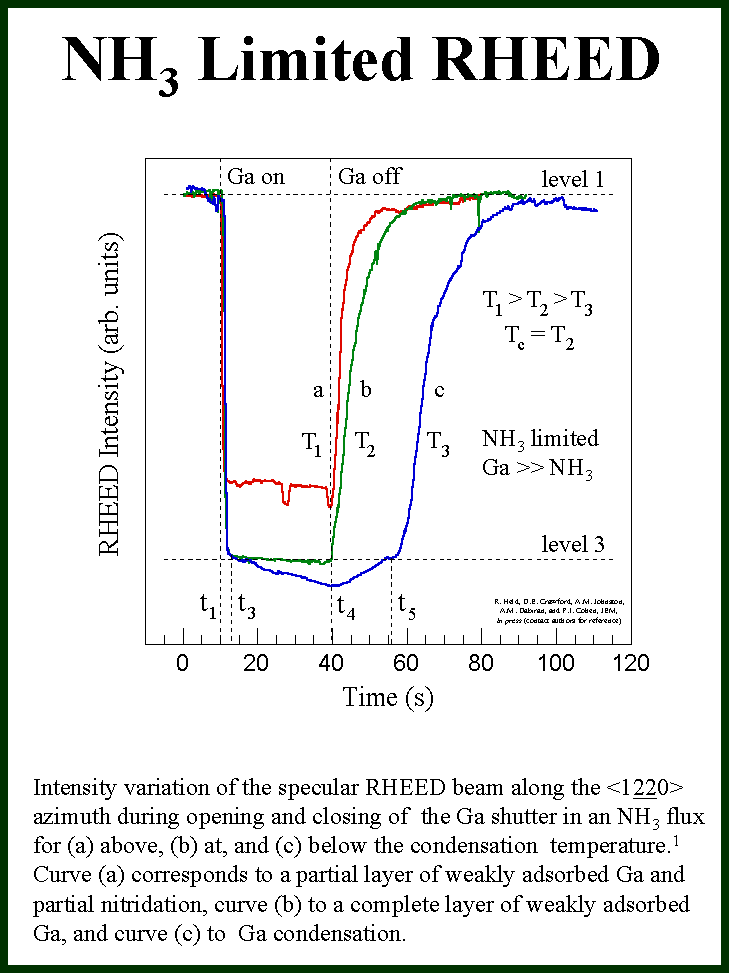
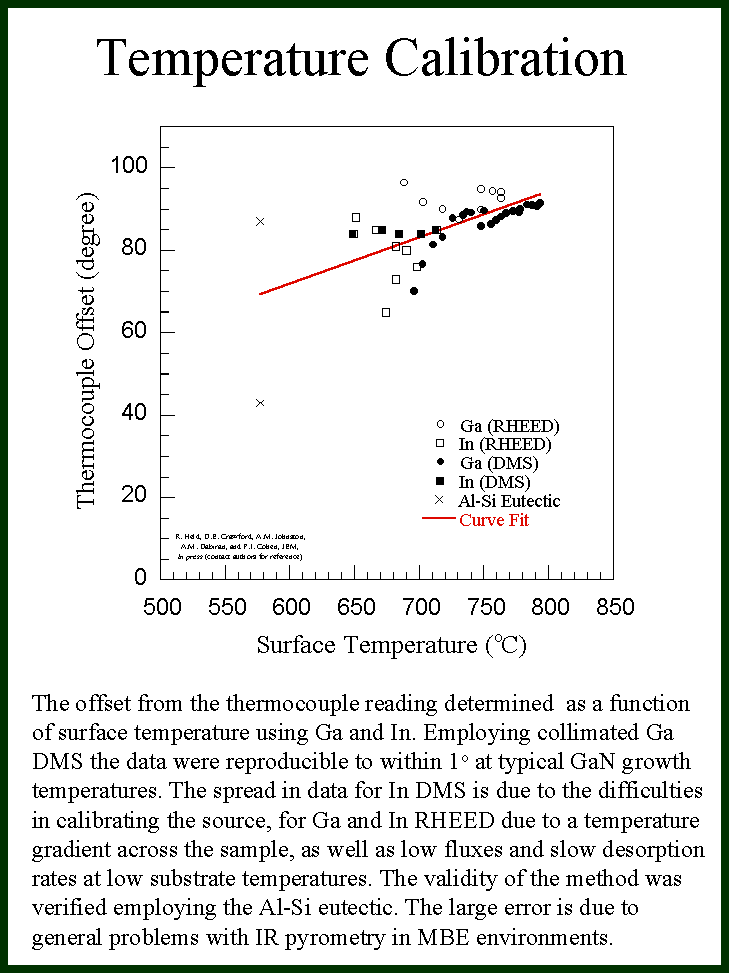


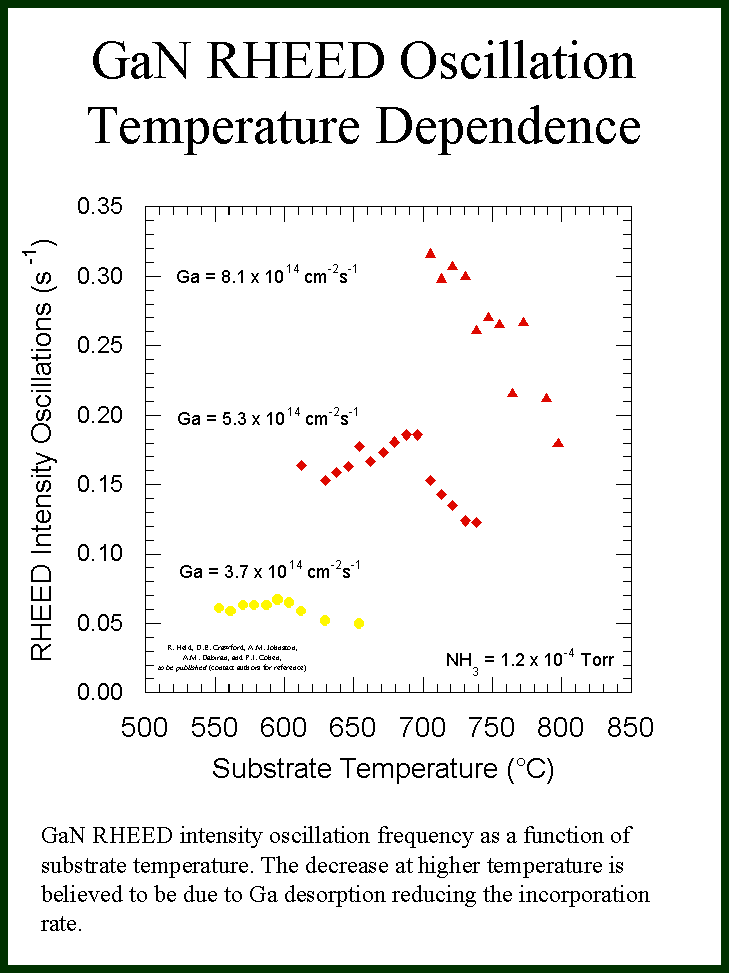

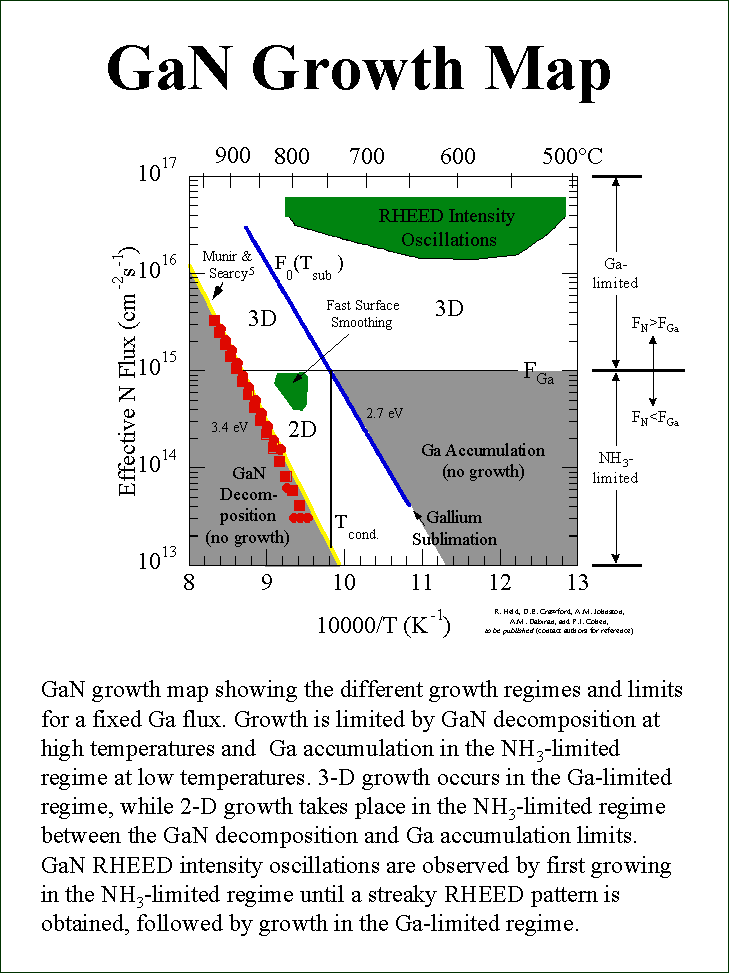
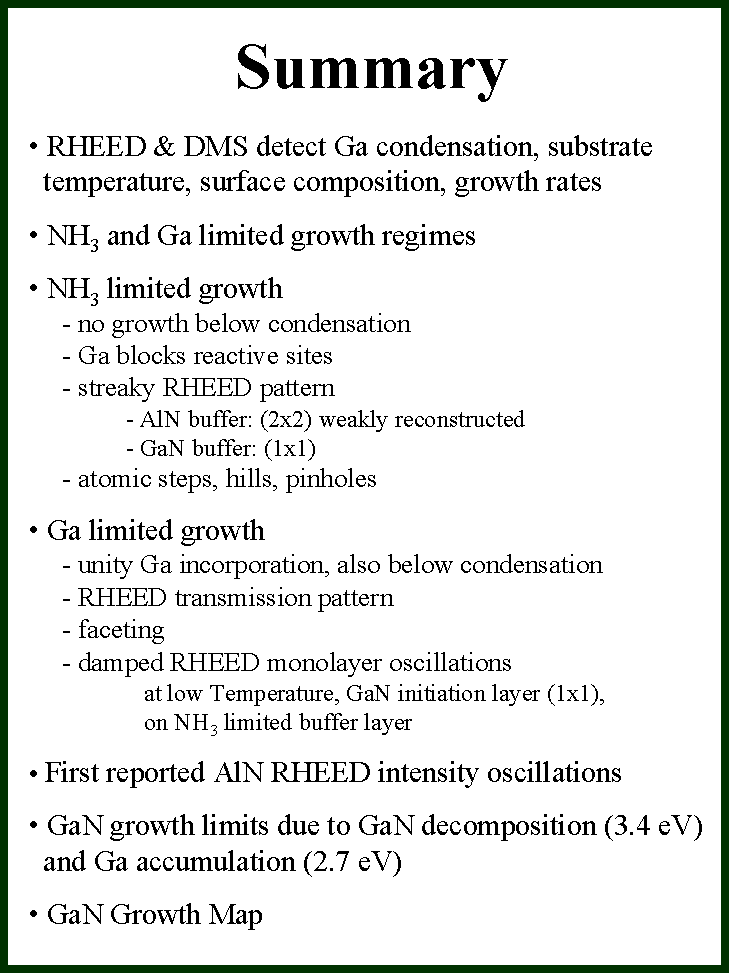
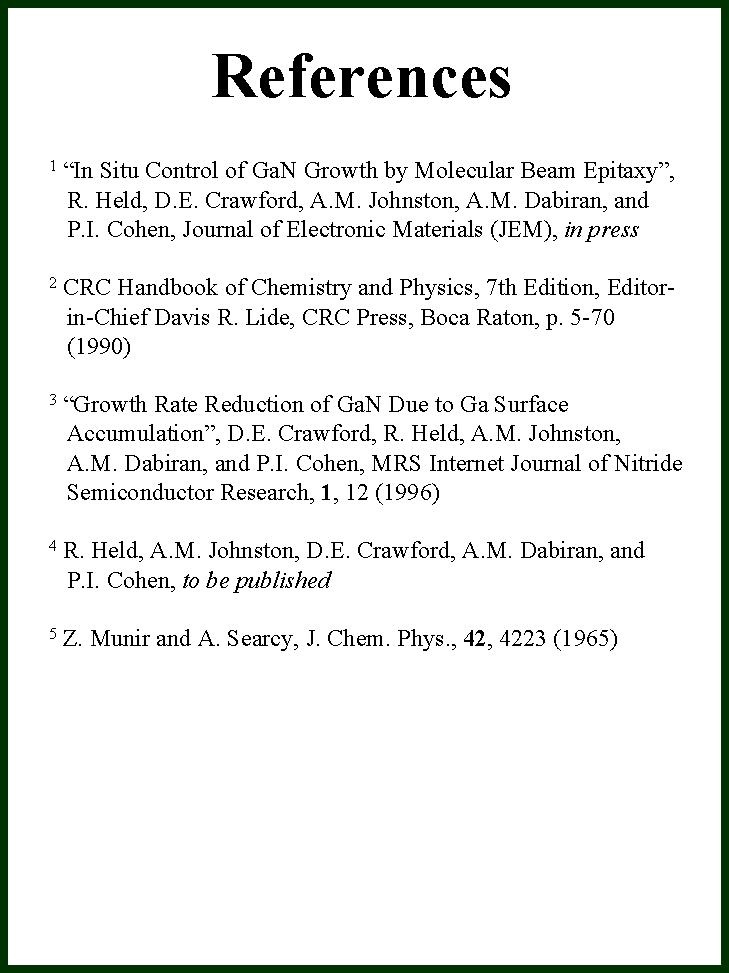
Back to my home page